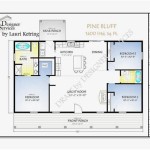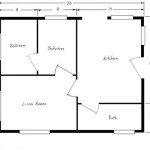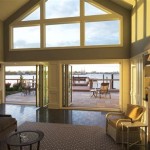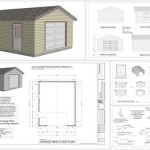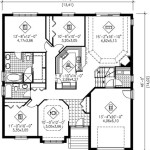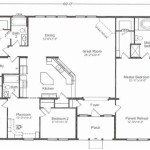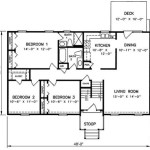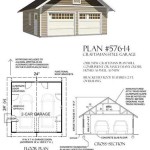Understanding 2-Story Floor Plan Design: Maximizing Space and Functionality
Two-story floor plans offer a compelling solution for homeowners seeking to maximize living space on a limited footprint. These designs inherently separate living areas, typically placing bedrooms on the upper level and common areas on the main floor. The benefits extend beyond space efficiency, encompassing privacy, potential for enhanced views, and distinct zones for various activities. However, successful two-story design requires careful consideration of several factors, including circulation, zoning, structural integrity, and aesthetic appeal.
The design process begins with a thorough assessment of site conditions, client needs, and budgetary constraints. Understanding the topography, orientation, and surrounding environment informs decisions regarding the building's overall shape and placement. Client requirements, such as the number of bedrooms, the size of the kitchen, and the desired level of openness in the living areas, directly dictate the configuration of each floor. Finally, a realistic budget serves as a crucial guide throughout the design, preventing overspending and ensuring that the project remains feasible.
Effective two-story floor plan design emphasizes both horizontal and vertical connectivity. Horizontal connectivity refers to the ease of movement between different rooms on the same floor, while vertical connectivity pertains to the accessibility between the two levels, primarily achieved through the staircase design. A well-designed plan minimizes wasted space, promoting a smooth and intuitive flow throughout the entire house.
Key Point 1: Zoning and Functional Separation
One of the primary advantages of a two-story design is the ability to clearly separate different functional zones within the home. The ground floor typically houses the living, dining, and kitchen areas, creating a communal space for family interaction and entertaining guests. Strategically placing a powder room near the main entrance maintains convenience for visitors without compromising the privacy of the upper level bathrooms. Laundry rooms are often located on the ground floor as well, sometimes tucked away near the garage or incorporated into a mudroom.
The upper floor is usually dedicated to bedrooms, bathrooms, and potentially a home office or study. This separation provides a sense of privacy and tranquility, allowing residents to retreat to their personal spaces without being disturbed by activities occurring on the ground floor. Master suites are often placed at the rear of the house for enhanced privacy and can incorporate features such as walk-in closets and luxurious bathrooms.
The zoning strategy must also consider the needs of different occupants. For example, families with young children may prefer to have all bedrooms located on the same floor for ease of supervision. Conversely, families with older children or elderly parents may opt for a guest suite on the ground floor to provide added independence and accessibility.
Noise reduction is another important consideration when zoning a two-story home. Placing bedrooms away from noisy areas, such as the kitchen or entertainment room, can improve sleep quality and overall comfort. Soundproofing materials can also be incorporated into the construction to further minimize noise transmission between floors and rooms.
Key Point 2: Staircase Design and Circulation
The staircase is more than just a functional element in a two-story home; it's a crucial design feature that significantly impacts circulation and spatial perception. The placement, style, and dimensions of the staircase must be carefully considered to ensure both safety and aesthetic integration within the overall design.
The location of the staircase should be centrally located and easily accessible from both the entrance and the main living areas. This ensures a smooth and intuitive flow between the two floors. Avoid placing the staircase in a dark or isolated corner, as this can create a feeling of confinement and discourage its use.
The style of the staircase should complement the overall architectural style of the house. Traditional homes often feature elaborate wooden staircases with ornate railings, while modern homes may opt for minimalist designs with metal or glass accents. The choice of materials, such as wood, metal, or concrete, can significantly impact the visual appeal of the staircase.
Building codes typically dictate the minimum and maximum dimensions of stair treads and risers to ensure safety. A comfortable and safe staircase should have consistent tread depths and riser heights. Handrails are also essential for safety and should be installed on both sides of the staircase. The design should also allow for sufficient headroom throughout the staircase to prevent injuries.
Beyond its functional and safety aspects, the staircase can also be a focal point of the home's interior design. A well-designed staircase can add visual interest and enhance the overall aesthetic appeal of the space. Consider incorporating features such as a curved staircase, a cantilevered staircase, or a built-in bookcase along the staircase wall.
Key Point 3: Structural Considerations and Load Bearing Walls
The structural design of a two-story home is inherently more complex than that of a single-story structure. Careful consideration must be given to the load-bearing capacity of walls, floors, and foundations to ensure the stability and safety of the building. A structural engineer is typically involved in the design process to analyze the loads and determine the appropriate structural system.
Load-bearing walls are essential for supporting the weight of the upper floor and the roof. These walls are typically located along the perimeter of the building and may also be present in the interior to provide additional support. It's crucial to identify and understand the location of load-bearing walls before making any modifications to the floor plan.
Floor joists and beams are used to support the weight of the upper floor and transfer the load to the load-bearing walls. The size and spacing of the joists and beams depend on the span of the floor and the anticipated load. Proper insulation between the floor joists can also help to reduce noise transmission between floors.
The foundation is the base of the entire structure and must be strong enough to support the weight of the building. The type of foundation depends on the soil conditions, the climate, and the building design. Common types of foundations include slab-on-grade foundations, crawl space foundations, and basement foundations.
Open floor plans, which are increasingly popular in modern homes, can pose challenges for structural design. Removing interior walls can compromise the structural integrity of the building, requiring the use of beams and columns to transfer the load. A structural engineer can help to determine the appropriate size and placement of these structural elements to ensure the stability of the building.
The location of plumbing and electrical systems also needs to be considered during the structural design process. Plumbing pipes and electrical wires need to be routed through walls and floors without compromising the structural integrity of the building. Avoid cutting or notching load-bearing walls or floor joists to accommodate these systems, as this can weaken the structure.
In addition to these core considerations, other important factors contribute to a successful two-story floor plan. Natural light plays a crucial role in creating a comfortable and inviting living environment. Maximizing the use of windows and skylights can bring natural light into the interior spaces, reducing the need for artificial lighting and improving the overall ambiance. Window placement must also consider solar orientation to minimize unwanted heat gain in the summer and maximize passive solar heating in the winter.
Proper ventilation is also essential for maintaining a healthy and comfortable indoor environment. Natural ventilation, achieved through strategically placed windows and doors, can help to remove stale air and humidity. Mechanical ventilation systems, such as exhaust fans and air exchangers, can supplement natural ventilation and ensure adequate airflow throughout the house.
Finally, consider the long-term flexibility and adaptability of the floor plan. As families grow and needs change, it may be necessary to remodel or reconfigure the living spaces. A well-designed floor plan should be adaptable to these changes, allowing for future modifications without compromising the structural integrity of the building.
Designing a two-story home requires a holistic approach that considers all aspects of the building, from site conditions to structural integrity to the needs of the occupants. By carefully addressing these considerations, homeowners can create a functional, comfortable, and aesthetically pleasing living environment that meets their specific needs and preferences.

Unique Two Story House Plan Floor Plans For Large 2 Homes Desi Container

Unique Simple 2 Story House Plans 6 Floor Two Cape Ranch Style

Unique Two Story House Plan Floor Plans For Large 2 Homes Desi Family Blueprints Victorian

Simple House Design Plans 11x11 With 3 Bedrooms Full Two Story Double Y Small Floor

2 Story 4 Bedroom Layout

2 Story House Plans For Narrow Lots Blog Builderhouseplans Com

2 Story House Plans Small Mansion Farmhouse Modern More Blog Floorplans Com

2 Story House Plans For Narrow Lots Blog Builderhouseplans Com

Small House Plans And Floor

House Plan 66719ll Quality Plans From Ahmann Design

